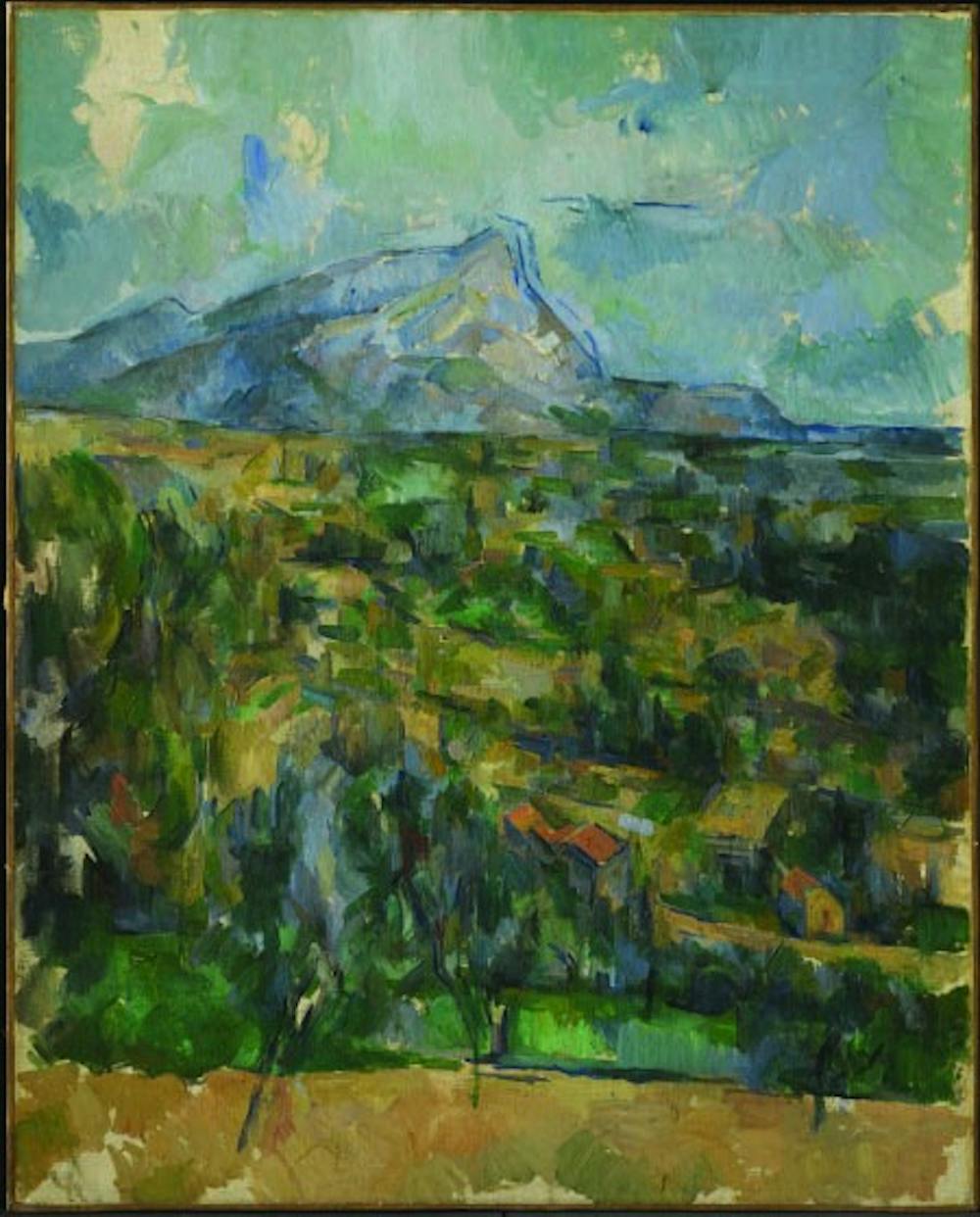When October arrives, the seemingly nondescript brick and glass building lying next to Prospect Garden will begin hosting exhibitions of works from the twisting paths of the Chinese Silk Road and 1,000 year-old illuminated manuscripts from the Persian Empire. But before we make the trip into the ancient past, the “Cézanne and the Modern” exhibition takes us on the beginnings of a journey into the modern art world, showing the works of the man who Picasso and Matisse called “the father of us all.”
“Cézanne and the Modern: Masterpieces of European Art from the Pearlman Collection,” is an exhibition currently showing at the University Art Museum. It opened on Sept. 19 and will run until Jan. 3, 2016. According to museum Director James Steward, the initial concept for this exhibition was “to make the [Pearlman] collection better known and to share it with four different museums in four separate countries … Work on the project began almost seven years ago, so it’s been a long time coming.”

This exhibition serves more as a homecoming of sorts, as the collection has technically resided with the Art Museum since its original collector, Henry Pearlman, loaned it to the University in 1976.For the past 18 months, the exhibition has been on the road, traveling to the Ashmolean Museum of Art and Archaeology at the University of Oxford in England, the Musée Granet in Aix-en-Provence, France (Paul Cézanne’s hometown), the High Museum of Art in Atlanta, Ga., and finally the Vancouver Art Gallery in Canada.
The return of this exhibition brings a unique experience for all the Art Museum visitors. Many of these pieces are so fragile that they spend much of their time in the dark for preservation. After January, “some of the collection will go back into storage, because the Cézanne watercolors for example, are so sensitive that they can only be exhibited once every ten years,” Steward explained.
According to Steward, Pearlman was initially interested in exploring painter Chaïm Soutine’s artistic origins. That line of inquiry led him toward Cézanne, who himself had taken inspiration from fellow French painters Edgar Degas and Gustave Courbet.
“There is kind of a three-generation narrative in the exhibition that talks about the rise of the avant garde from the 1850s to the 1920s,” Stewart said.

Cézanne, a French artist who lived in the time period during which avant garde was rising in prominence, is most notable for serving as the bridge between the popular 19th century Impressionist movement and the 20th century post-Impressionist explorative movement that would evolve into Cubism.
His works serve as the centerpiece here. Landscapes and still lifes dominate, and all of Cézanne’s pieces retain the stylistic qualities of Impressionism featuring loose, small strokes combined with vibrant, pure colors layered on top of one another. The watercolor sketches, which are mostly composed of sheer pastel yellows and purples coloring paper on which pencil lines remain visible, are the highlights of the exhibition; examples of those on display include “House in Provence” and “Mont Sainte-Victoire.” As Steward said, “This is probably the best single collection of watercolors by Paul Cézanne under one roof anywhere.”
When walking around the exhibition, however, it does not seem so much like “Cézanne and the Modern,” simply because while there are many Cézanne pieces in the exhibition, his works do not overpower the works of the other artists also represented. All of the works seem to balance out one another with their similarities and differences, flowing like a conversation between equals.
This feeling the exhibition provokes is quite fitting, as the familiar names appearing on the walls alongside Cézanne’s are those of his contemporaries, such as Degas, Manet and Van Gogh, who are all well-known names in the modern art world.

In fact, two of the pieces which Steward cited as the most striking to him were pieces made by other artists, the Van Gogh painting of a stagecoach and the stone head by Modigliani. The painting “was the only time in [Van Gogh’s] whole career that he ever explored that subject matter, and it’s shockingly fresh as a work of art,” Steward said. As for the stone head by Modigliani, he added, “it’s towards the end of the exhibition, but it’s very mysterious and it appears almost ancient and modern at the same time … It doesn’t reveal its meaning easily.”
With the depth of consideration and technique put into all of these pieces, it is easy to walk around the exhibition and simply stand and breathe in the pieces. This Cézanne exhibition is the biggest exhibition in the fall, and some University students may have seen glimpses of it if they went to the Nassau Street Sampler earlier in September. Choosing to open the exhibition on the first weekend after classes started was a purposeful decision that the museum staff made.
“One of my hopes for this Cézanne exhibition, is that because so many people do love Cézanne and this generation of artists … it will become a lure for visitors who maybe don’t know this museum already to discover this museum for the first time and hopefully, while they’re here, to discover the whole range of what we collect,” said Steward. “I hope it brings more tourists [and] students, and that it will help people realize that Princeton has, over the centuries, built one of the great art collections in the world.”
Correction:Due to a reporting error, an earlier version of this article misstated the ownership of the collection. Henry Pearlman and the Pearlman Family Foundation own the collection, and it has been on loan to the University since 1976.








